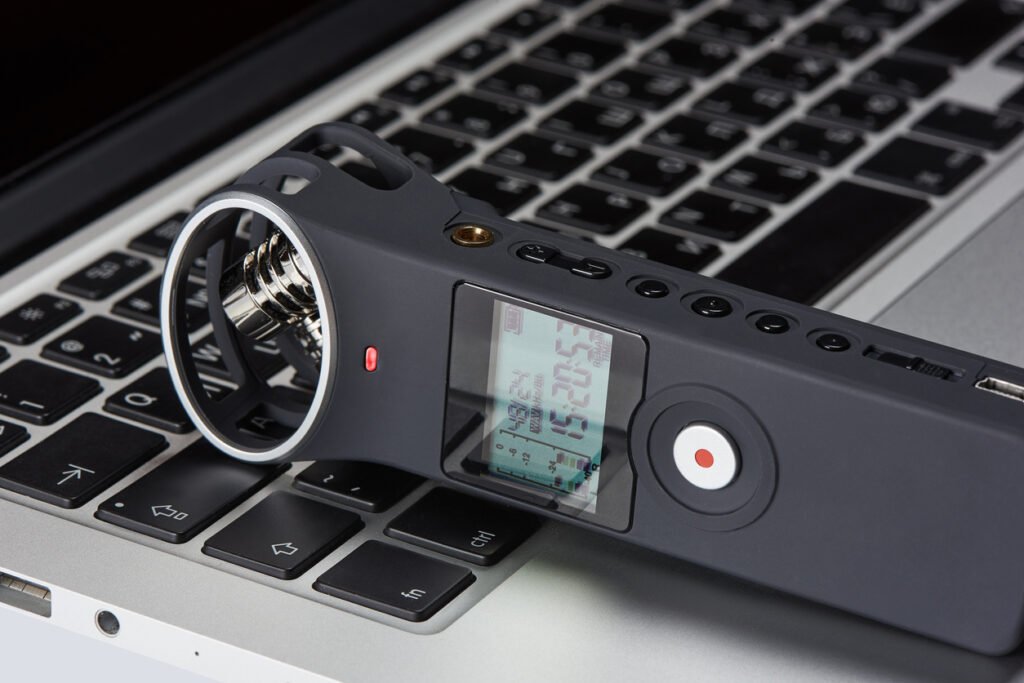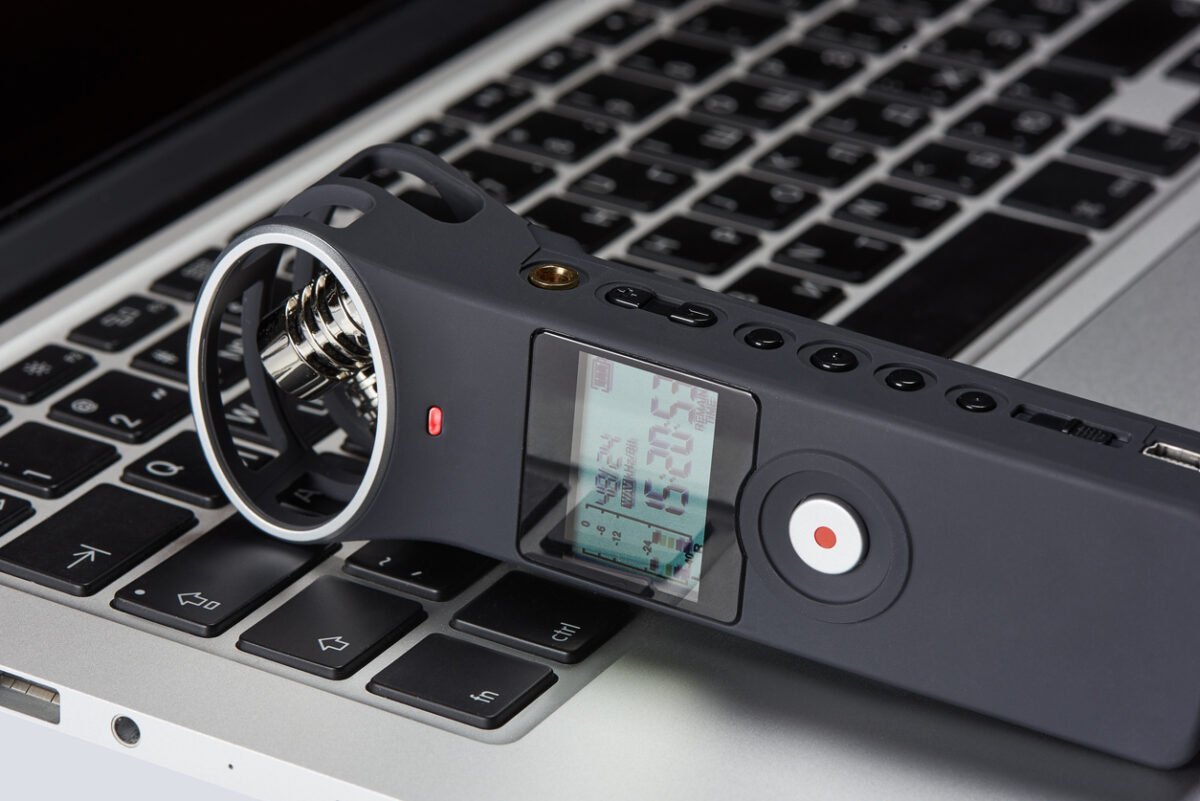
When first becoming a digital reporter, it is essential to make sure you have the right equipment for the job. Buying high-quality, professional-grade equipment is essential to creating a clear record and making sure the equipment lasts. Most digital reporters who buy their own equipment will be loading, unloading, setting up, and breaking down their equipment every day, sometimes multiple times in a day.
Microphones
We recommend that you have a one-to-one ratio of microphones to participants, especially in the deposition environment. In a courtroom, it may make more sense to have one microphone per station like a podium, attorney table, or witness stand. For depositions, it is best to look for quality phantom-powered (48V) lavalieres or hand-held microphones on the stand that are designed for speaking rather than musical instrument pickup. It is also good to have a phantom-powered boundary microphone to cover wider spaces for co-counsel or larger parties. For hearings and trials, we recommend using phantom-powered boundary microphones at each station, as they are easy to set up and move while covering a wide geographic area in case an attorney moves while talking. Here are a few examples of these microphones:
Omni-Directional Electret Condenser Lavalier Microphone
Omni-Directional Handheld Microphone
Audio Technica Pro44 Condenser Boundary Microphone
Multichannel Recorder/Multichannel Mixer
Making sure to capture the audio in its multichannel glory is important and can be critical to an accurate transcript if people start to speak over each other before you can stop them. There are two ways to do this. For many years, the only way was through what our industry calls a digital mixer, or what is more accurately referred to as an ASIO device, or audio interface. These devices deliver multichannel audio to your digital court reporting software. You will need to check with the software developer to make sure it can handle multichannel audio as well as what devices it can communicate with. The other option is using a multichannel recorder that records the audio separate from the computer and then provides a mix-down of the audio to the computer and digital court reporting software. Both options produce a viable solution to make sure multichannel audio is captured. Here are a few examples of these devices:
Zoom Podtrak P4 Podcast Recorder
8 Channel High Res USB
Analog-to-Digital Converter
If you are using a multichannel recorder, you will need a way to capture the sound on your computer from the recording device. Some higher-end recorders have this function built into them already and can connect to the computer via USB, but many only provide an output signal in analog audio. If this is the case, you will need an analog-to-digital converter, sometimes called an external sound card. Make sure to buy one that has a connection and input level that matches your device. Here is an example of one that is popular for its controllability.
Computer
Many digital court reporting software systems have minimum specifications like 4GB of RAM and a dual-core processor, but these are only the minimum specifications and often are based on a machine that is running nothing else, not even antivirus software. We recommend buying a computer that can handle the load and have spare capacity for other programs. Look for at least a quad-core processor, although there are many laptops on the market under $1000 with 8-core processors. RAM is another key factor. Windows needs 4GB just to run, and usually your program needs an additional 4GB, so if you get 8GB, there is no excess capacity. We recommend looking for 16GB. Beyond those key factors, hard drive size, screen size, and ports are up to you as long as they serve your needs and meet or exceed the software specifications. This laptop is a good example of a computer that should exceed software developers’ minimum specifications.
Headphones
Confidence in monitoring your audio is key to success as a digital court reporter. It is best to monitor with a good pair of headphones rather than earbuds because of their ability to better reproduce the sound being captured. Remember, never use noise-canceling headphones in a proceeding, as their active noise-reducing feature can stop a reporter from knowing what sounds are being captured on the record. It is better to hear the AC noise and correct it than to find out about it later. Noise isolation is a passive process by which a physical barrier, like the foam around the ear cups, separates what you can hear with the headphones from the environment. Depending on your ear size and comfort level, you should look at the ear versus over-the-ear headphones. Here are two examples:
Sony ZX110 Headphones
Audio Technica ATHM40x Headphones
Backup Recorder
Even if you have the best equipment that is professional-grade, up-to-date, and well-maintained, Murphy’s Law will eventually catch up with you. That is why every reporter, no matter the methodology of capture, needs a backup recorder. These small devices sit outside the normal audio chain and capture a completely independent recording. Also, being battery powered, they are not subject to power outages or fluctuations. We recommend having at least two forms of backup recording so you can cover larger areas, and also for extra peace of mind. This is an example of a backup recorder that is popular in the industry.
This article will give you a general idea of the equipment needed to set up a kit, but it is not meant to be an all-inclusive list of everything a digital court reporter needs to do their job. If you want to learn more about digital court reporting through a BlueLedge course, go to https://crtclassroom.blueledge.com.

Benjamin Jaffe is the Manager of Digital Training and Development for BlueLedge

